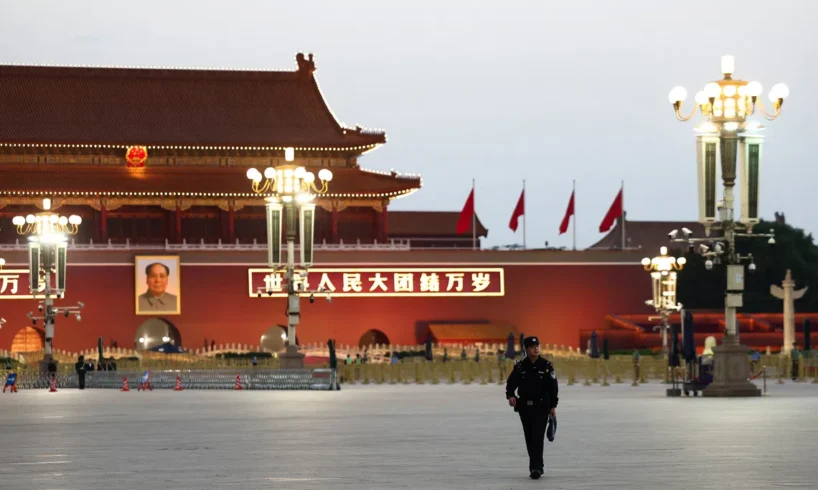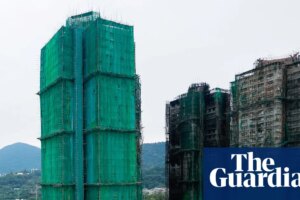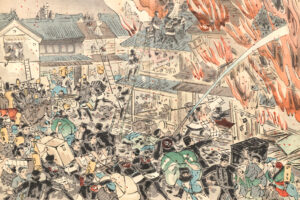
BEIJING – China’s top leaders will gather in Beijing on Oct 20 for a four-day meeting that will be closely watched for clues on how they plan to tackle the country’s biggest challenges, from sluggish consumption to the trade and technology war with the US.
Known as the Fourth Plenum,
the closed-door meeting will review proposals for the 15th Five-Year Plan, which charts the country’s economic and social development strategy from 2026 to 2030.
The Straits Times looks at the significance of the Fourth Plenum, how it is expected to shape China’s growth for the next five years, and what changes in leadership could be on the cards.
The Central Committee of the Communist Party of China (CPC), which comprises about 370 of the country’s most powerful leaders, holds seven plenary sessions every five-year term. The upcoming gathering will be the fourth of the 20th Central Committee elected in 2022.
The main agenda for this meeting is to discuss and endorse the party’s proposals for the 15th Five-Year Plan. The plan itself will come into effect after the Parliament approves it in March 2026.
The plan is a sprawling document that sets out a range of socio-economic targets for the next five years, such as average life expectancy, labour productivity growth, and grain production capacity.
What used to be Soviet-style central planning has evolved into a comprehensive blueprint that spans carbon emissions reduction, military modernisation and growing China’s cultural power.
Analysts will also be watching for possible personnel moves, as the Central Committee often uses such gatherings to remove sidelined officials from its ranks and promote alternate members to fill their seats.
Judging by recent signals from the Chinese leadership, and by comparing the lead-up to past plenums, analysts expect more continuity than change, with a key motivation being Beijing’s view that the external outlook is increasingly uncertain.
Mr Alexander Brown, senior analyst at the Berlin-based Mercator Institute for China Studies, noted that the Politburo meeting of Sept 29 had discussed elements which CPC leaders believe the next five-year plan must address.
“Front and centre… was really a continued focus on self-reliance and technological leadership,” he said at a briefing on Oct 16.
China’s leaders have emphasised that science and technological innovation is key to developing the economy. This comes after the successes of industries such as electric vehicles, solar cells and lithium batteries.
Cutting-edge fields highlighted in the 14th Five-Year Plan include semiconductors, biotechnology, and aerospace. In 2024, total research and development investment exceeded 3.6 trillion yuan (S$654.4 billion), a 48 per cent increase from 2020.
As for other priorities, Mr Brown said: “There’s a recognition that due to the internal and external challenges facing China, they will need to do more to boost consumption. And I think social welfare policies will be a crucial part of that.”
Observers will be looking at the signals that address weaknesses of the Chinese economy – insufficient domestic demand, a housing market slump that has dampened people’s willingness to spend, and rising youth unemployment that hit 18.9 per cent in August.
Still, China’s likely focus on investment in strategic industries comes in the face of what Beijing perceives to be American suppression. Both countries remain locked in disputes over trade and technological export controls.
An Oct 15 report by the Asia Society think-tank said that Chinese President Xi Jinping’s first two five-year plan plenums – in 2015 and 2020 – charted “a shift in emphasis from confronting internal problems to countering external threats, and from economic growth to national security”.
“Risks have increased, but the overall outlook for the 15th (Five-Year Plan) remains consistent with the 14th. Beijing has not altered its core economic approach, suggesting this Fourth Plenum will feature more policy continuity than past Fifth Plenums,” added the report.
The CPC’s plenums are also an important forum to decide on manpower reshuffles. The Central Committee has the power to confirm, by a two-thirds majority, any decision to discipline a member by dismissal, probation or expulsion.
For instance, the third plenum in July 2024 relieved former foreign minister Qin Gang of his Central Committee seat. That meeting also approved a decision by the Politburo, which meets monthly, to expel former defence minister Li Shangfu.
This time, China watchers are waiting to see if there will be any word on high-profile Chinese leaders who have reportedly been ensnared in corruption investigations and have not been seen for months.
Already, on Oct 17, China’s Defence Ministry said No. 2 general He Weidong and navy admiral Miao Hua have been expelled from the party and the military. A ministry spokesman added that their party expulsion will be ratified at an upcoming plenum.
Mr Liu Jianchao, the former head of CPC’s international department who was seen as a potential foreign minister, has also reportedly been investigated. There has been no official announcement about his fate.
Former Minister of Industry and Information Technology Jin Zhuanglong was removed as the ministry’s party secretary in April. Mr Yi Huiman, the former chief of the China Securities Regulatory Commission, was announced to be under investigation for disciplinary breaches in September.





